The Stories of #IAMEJ
No one knows the struggle of living with toxic pollution like our community members who face this challenge every day. EHC believes that those affected should have the opportunity to raise their own voice and demand change, becuase we are all environmental justice.
Meet Paw Wah
After leaving a refugee camp in Thailand, Paw Wah moved to City Heights in 2008. She got involved with EHC to help her neighbors fight for environmental justice and engage the Karen community to vote. She recently graduated from SALTA, EHC’s leadership-development training program, to empower residents to become leaders in our communities.
Meet Philomena Marino
Philomena has lived in Barrio Logan for most of her life. She has been a relentless advocate for public safety and senior citizens in our community. When the Tenth Avenue Marine Terminal Port Expansion project was proposing more pollution for Neighborhood Logan and jeopardizing the health of their family, Philomena joined EHC. Today, she is a SALTA graduate, a neighborhood Logan promoter and is currently leading a truck survey to monitor air pollution in her neighborhood.
Meet Silvia Calzada
Silvia Calzada recently joined EHC and the California Environmental Justice Alliance in Sacramento, where she talked to elected officials about what our communities need to become safe and healthy places to live, work and play. Silvia, a resident of National City, says the experience has changed her life. Thank you for being a leader for #healthyhoods, Silvia.
Meet Elizabeth Alvarado
When Elizabeth's daughters were six-months old, she realized that she needed a healthy community to raise a healthy family. After taking EHC's SALTA leadership-development classes, she learned how to make her neighborhood a better place for her daughters to grow up. Today, she continues to be a leader for her family and for #healthyhoods in Sherman Heights.
Meet Trong Dinh
In City Heights, Trong Dinh and its neighbors, struggle with the lack of affordable transportation access. Trong motivates his Vietnamese neighbors to get involved with EHC because he knows his community deserves to healthier place to live, work and play.
Meet the SALTA 2017 Graduating Class
At the end of June, we celebrated community leaders who completed our leadership-development training, SALTA. The 2017 class reminds us that every one of us is a leader, and leadership is best cultivated from the community.
Meet Margarita Moreno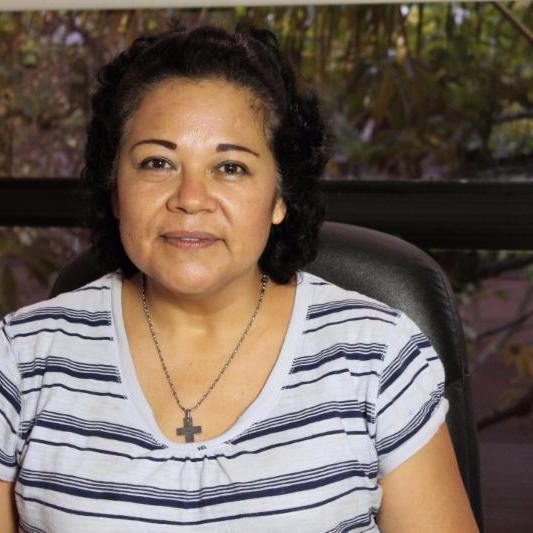
Margarita Moreno has lived in Old Town National City for seven years. With a son at Kimball Elementary School, she wanted to make positive changes in her neighborhood for the wellbeing of her family. Now, Margarita is taking EHC's SALTA Leadership Development Training to become a leader with the tools and knowledge that will improve her community.
Meet Margarita Garcia 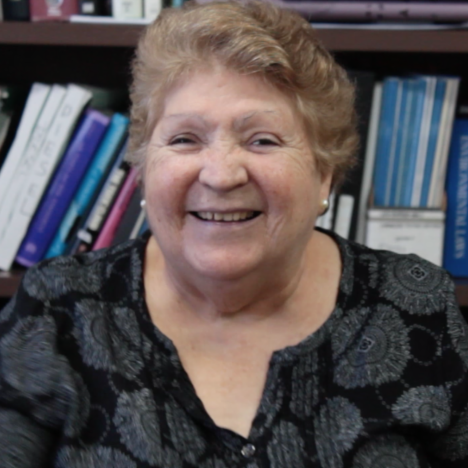
Margarita lives in National City, where poor air quality threatens the health of children and families. She goes door-to-door with EHC to inform her neighbors about toxics in the air they breathe and encouraging them to demand change. To Margarita, environmental justice means, "staying informed about what's happening in our city," and empowering her community to have a voice in the process.
Meet Vanessa Conde
At only 23 years old, Vanessa already knows that environmental justice is essential to creating a better place for herself and her family to call home. Vanessa's mother and three sisters are all involved with with our Colectivo Chilpancingo to advocate for #healthyhoods in Tijuana. As an environmental engineering student at the Technological Institute of Tijuana, Vanessa is a shining example of a young person tirelessly working toward a healthier future.
Meet Veronica Gohlke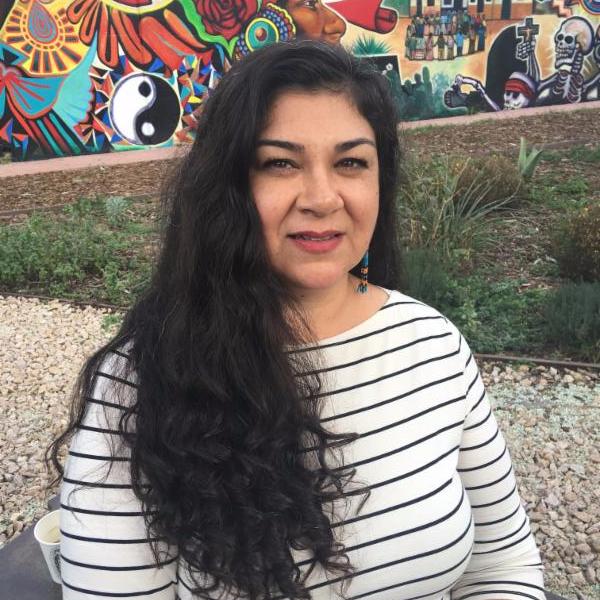
After growing up in Barrio Logan, Veronica wanted to set an example for her daughters by giving back to her community. Now, she works to make her neighborhood a healthier, more vibrant place by volunteering with EHC as a caretaker of the Chicano Park Herb Garden and teaching parents to use non-toxic cleaning supplies at home.
Meet Carolina Gámez
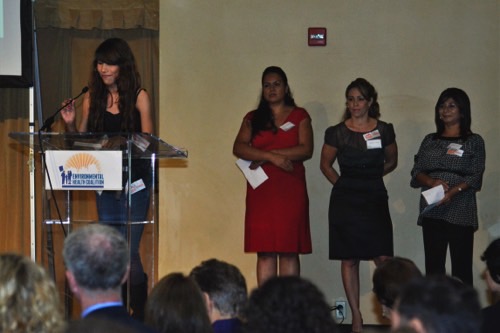 At only 22 years old, Carolina is making a big difference in Colonia Chilpancingo in Tijuana. Carolina took a SALTA training to learn about the environmental issues in her community, but got so much more than she bargained for. Carolina found out that all of the inspiring leaders she met had started just like her – concerned residents looking for change and willing to do the hard work.
At only 22 years old, Carolina is making a big difference in Colonia Chilpancingo in Tijuana. Carolina took a SALTA training to learn about the environmental issues in her community, but got so much more than she bargained for. Carolina found out that all of the inspiring leaders she met had started just like her – concerned residents looking for change and willing to do the hard work.
Meet Monica de la Lanza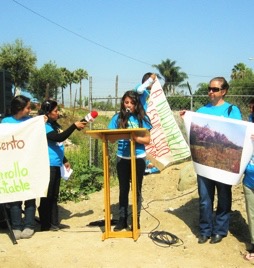
Monica knows her voice is powerful and she’s advocated for border justice since she was just nine years old. As a long-time member of EHC’s Grupo de Jóvenes, she makes our community’s perspective heard by writing newsletters, creating murals and speaking at press conferences. Monica is living proof that young people have power to bring justice to our communities.
Meet Lisette Zavala
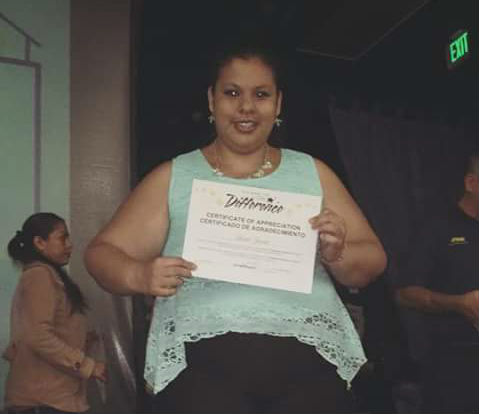 Lisette Zavala experiences the effects of environmental injustice every day as she and her children suffer from the air pollution in her neighborhood. After getting involved with EHC, Lisette learned more about how environmental issues affect the health of families like hers. She consistently speaks out to urge political leaders to improve local air quality because her children and neighbors deserve a safe, healthy environment to live, work and play.
Lisette Zavala experiences the effects of environmental injustice every day as she and her children suffer from the air pollution in her neighborhood. After getting involved with EHC, Lisette learned more about how environmental issues affect the health of families like hers. She consistently speaks out to urge political leaders to improve local air quality because her children and neighbors deserve a safe, healthy environment to live, work and play.
Meet Paw Say
 Since joining EHC last year, Paw Say has already become a local leader. With the help of EHC’s City Heights Community Action Team, Paw educates her fellow Karen-speaking residents about air quality, public transportation and other important issues facing City Heights. Thanks to her hard work, local residents are taking action to transform our community.
Since joining EHC last year, Paw Say has already become a local leader. With the help of EHC’s City Heights Community Action Team, Paw educates her fellow Karen-speaking residents about air quality, public transportation and other important issues facing City Heights. Thanks to her hard work, local residents are taking action to transform our community.
Meet Alicia Sanchez
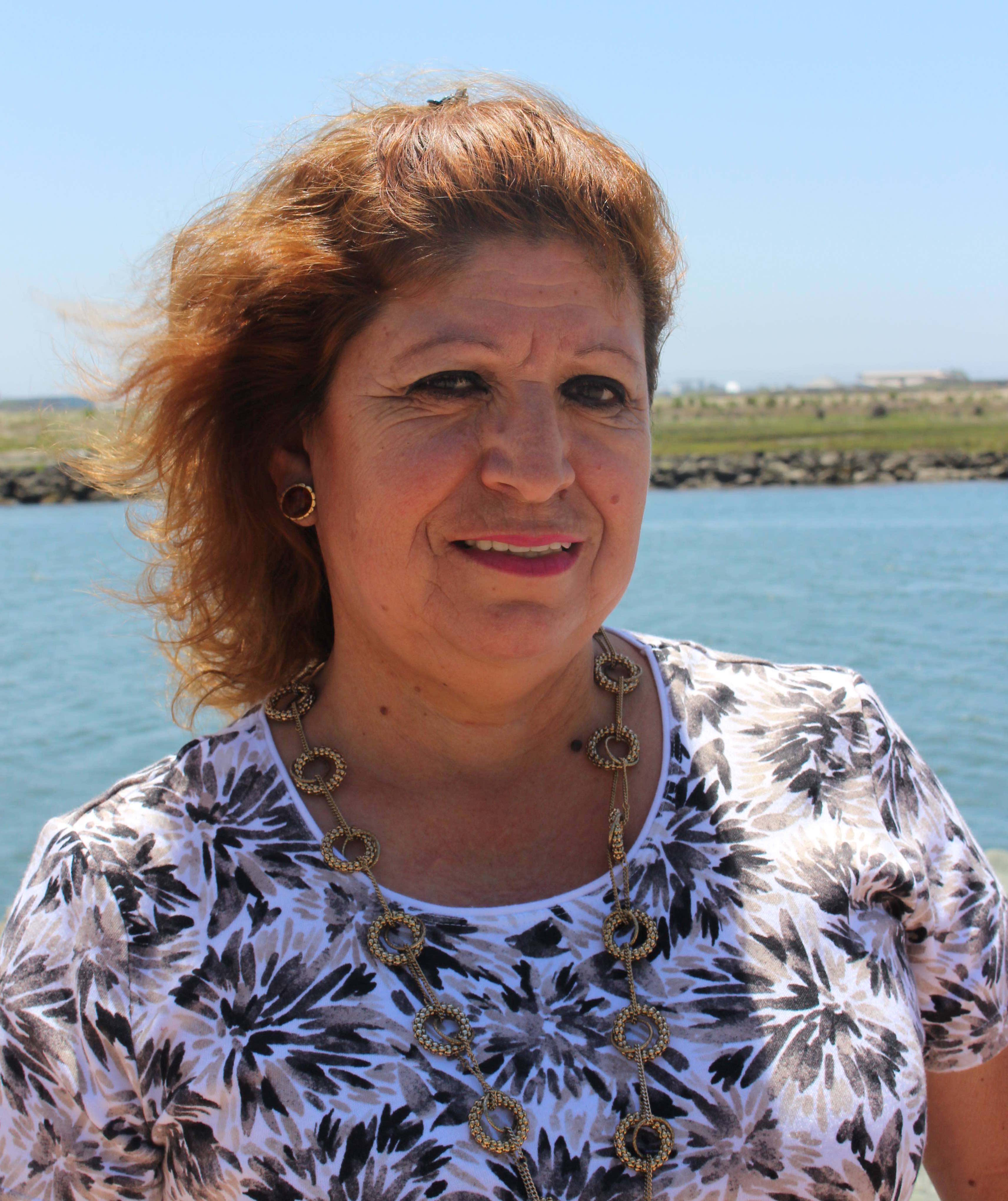
Eight years ago, Alicia Sanchez came to an EHC community meeting to learn about an affordable housing project in her neighborhood. She quickly became inspired and remained involved to see the project through to city approval. Last year, Alicia witnessed the groundbreaking of the 201-unit housing project that she worked to make a reality. Alicia says she is proud to know that the local housing will bring many families an improved quality of life.
Meet Alma Alcantar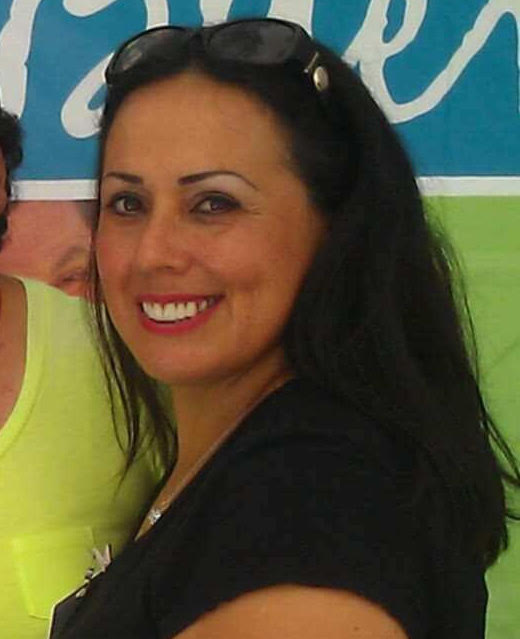
Four years ago, Alma Alcantar came to a community meeting with EHC’s Healthy Kids Campaign community organizer, to learn about EHC’s work protecting the environment and the health of children. Today, Alma remains an active volunteer and a resource for families in her Sherman Heights community. She informs her neighbors about toxic pollution so everyone can participate in improving our communities and quality of life.
Meet Bea Barraza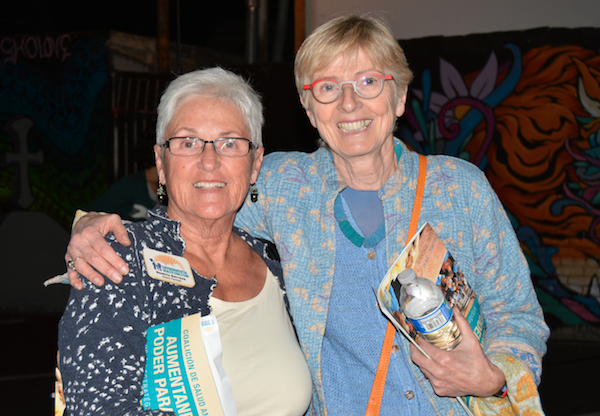
Beatriz Barraza became involved with EHC in 1987 after meeting Diane Takvorian in a fitness class. Bea asked Diane to sign her petition to stop the Navy Development in Florida Canyon, and they began discussing passion and dedication for public health issues. Since then, Bea has been an active supporter of EHC who served as the chair of the Board of Directors for many years. She currently serves as chair of the fund development committee.
Meet Adriana Covarrubias
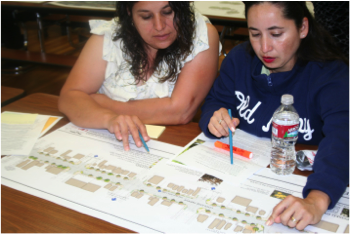
Adriana Covarrubias is a member of EHC's Community Action Team (CAT). She lives in Old Town National City and started volunteering with EHC in 2008. "I was interested in EHC because the organization wants to achieve a better quality of life for the people who live in National City," says Adriana. "I like participating in the fight for social justice and environmental justice. I will continue participating to involve more members of my community and achieve positive changes so we can have a better, toxic-free environment".
Meet Axel Ruiz

Axel has been a member of the Border Environmental Justice Campaign's Youth Group for over five years. From the moment he joined the group, he showed how interested he was in improving his community's quality of life, as well as his ability to be a voice for the rest of his peers. He is now 18, and has just begun studying for his Environmental Engineering degree in Tijuana. He likes playing soccer and doing martial arts. He also inspired his younger brother to join the Youth Group. Axel is a great example of how hard our young people work and how interested they are in the well-being of the community; all they need is an opportunity to develop their potential.
Meet Irma Ortiz
Ever since Irma became interested in building a healthier community for her family in 2009, she's been an active EHC member. She has infectious energy. After a short chat with Irma, her neighbors become inspired to get involved and make their neighborhood a better place to live. She is part of the Community Action Team in Barrio Logan and rarely misses a monthly meeting. According to Irma, "It's important that we get involved with organizations such as EHC in order to become more conscious of the things that are contaminating our communities. We can become more aware of what we can do to help."
Meet Sonia Peréz
(Right next to Myrna, Ana, Lourdes and Eva)
Sonia has been a member of the Border Environmental Justice Campaign for more than eight years. Along with 11 other women, she has worked tirelessly improving air quality and saving the Arroyo Alamar as part of the Chipancingo community action team in Tijuana, Murua. She is also an active participant in local school programs, her community church and the Creative Hands cooperative. Her constant engagement with the health of her neighborhood is a shining example of the power of community action. She makes a difference every day and never ceases to inspire us. Plus, she's an excellent cook.
Meet Erick Ortega 
Erick Ortega found his calling three years ago when he learned that nearby industries were polluting his neighborhood, making people sick. Before long, Erick found himself on a mission to share this information and educate his neighbors on environmental justice. Today Erick is part of the EHC Barrio Logan Community Action Team and the City of San Diego Barrio Logan Community Planning Group, where his goal is simply "to be the voice of the pueblo." Erick says that it's up to all of us, no matter where we live or how marginalized our communities are, to get involved in the wellbeing of our neighborhood.
Meet Bui Cong Tuong 
Bui Cong Tuong became one of our newest members after graduating SALTA, our community leadership program. Upon graduation he made a promise to his community, "By all means necessary, I will organize and educate the Vietnamese community of San Diego. Every family will know how to fight for environmental justice in San Diego, our second home." Bui is also a poet under the pseudonym Song Cuu. We love this excerpt from one of his poems: "We love the blue sky like we love the freedom and peace in the United States. The Earth is our common home. Together lets protect our environment."
Meet Leonor Garcia 
Leonor Garcia is a member of the Old Town National City Community Action Team. She began her involvement with EHC in 2007 as a promotora and has been active ever since. Leonor is motivated by the opportunity to be a part of social and environmental change. She feels, "Community involvement is essential. When our voices are heard, our needs can be met and we can achieve a better quality of life in a toxic-free community."
Meet Carolina Gámez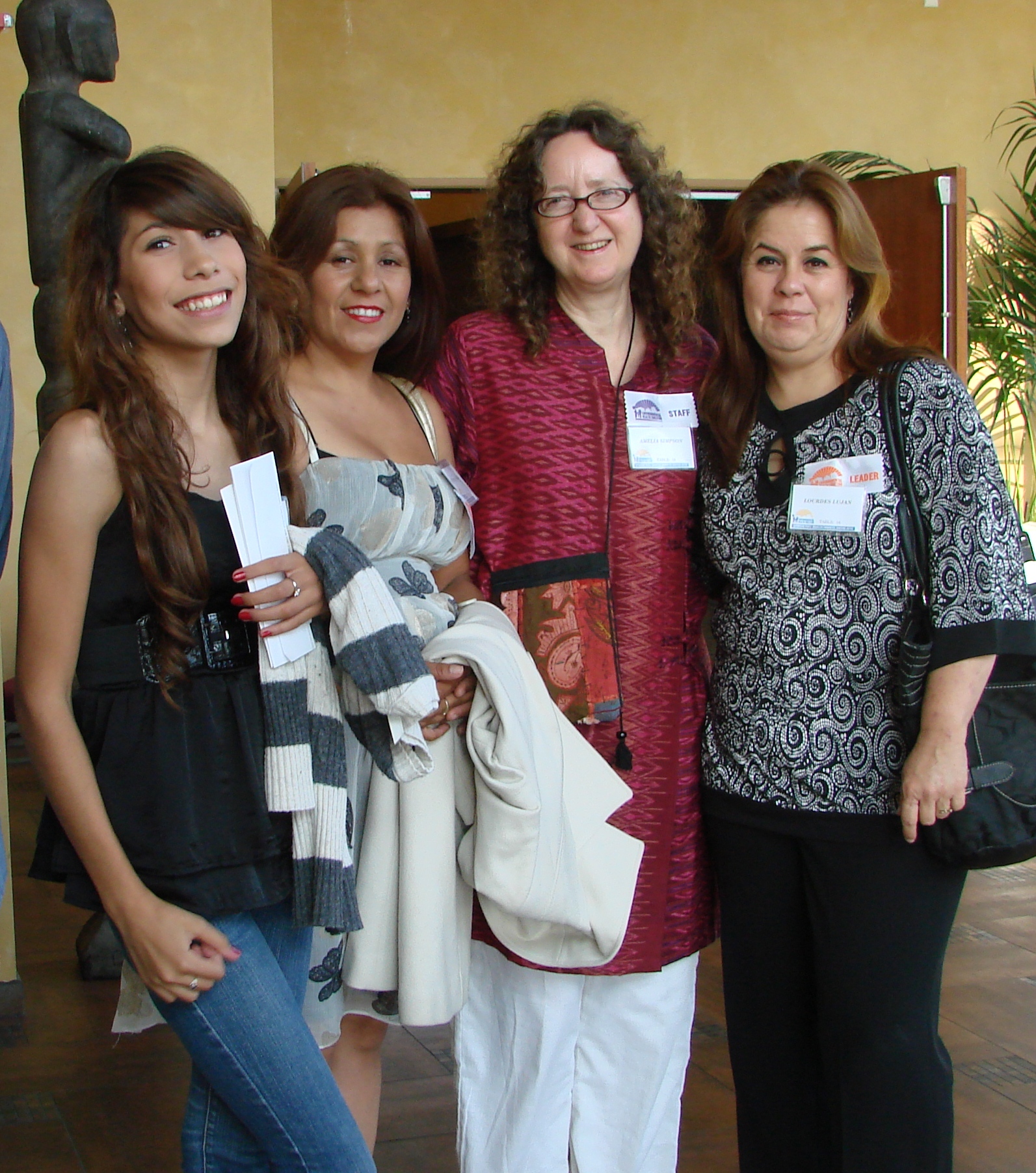
Carolina (left) with Amelia Simpson, Yesenia and Lourdes.
Carolina, now 20 years old, has been a member of EHC's youth group in the Environmental Border Justice Campaign since she was 14. Now her ten year-old sister Katia has joined the youth group's second generation. Carolina is passionate about improving the quality of life for people in her community, making her attentive at every meeting and event and always involved in the logistics. She is a talented public speaker, a spokesperson for her team and has participated in making two comic books and four coloring books to showcase the work of her team. In the photo above she appears with Amelia Simpson, former director of the Border Environmental Justice Campaign, and Yesenia and Lourdes, two of the first promotoras in Tijuana. Carolina currently studies sociology and continues participating in EHC's youth group as a shining example of consistency and conviction.
National City Celebrates Safe Routes to School with Adriana
National City Celebrates Safe Routes to School with Lorena
Meet Enrique Sanabria
Enrique (top) stands with EHC staff and community members at the Port of San Diego
Enrique Senabria got involved with EHC about a year ago after an invitation from Community Organizer. He likes to participate because he learns about important issues and how he can contribute to protect his community, live better and be healthy. Enrique likes being involved with EHC because it brings awareness to the importance of taking care of our planet and having clean air for all and he hopes more people will participate and help change polluting habits. He believes what is happening in the world is a direct result of the industries and people that pollute, and the very reason we should unite and work together to better ourselves and live our world. Enrique recently attended a meeting on the Port of San Diego climate plan and felt good after giving testimony asking the commissioners to include environmental justice in the plan to ensure a better quality of life for us all.
Meet Ana Langarica.jpg)
Ana speaks for Border Environmental Justice
In 2005, Ana Langarica joined EHC's Border Environmental Justice Campaign. Back then her son Alan was only a few months old. On meeting days, Ana would leave her older son, Angel, at school and would run to the meeting with Alan in the stroller to make the meeting on time. At first Ana was shy but her commitment was evident. Even during bad weather she would cross the creek to get to the meeting on time, and if the rain did not allow her to, she would walk ten blocks. With her actions, Ana is teaching her children how to work and love their community. Alan and Angel are now members of the Youth Group and together with their mom, they are fighting for the Arroyo Alamar.
Meet Lorena Chavez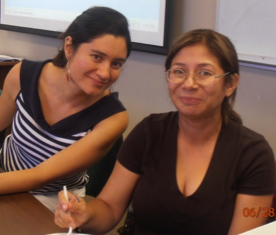
Lorena (right) with Policy Advocate, Carolina Martinez
Lorena Chavez has been involved with EHC since 2005, mostly because she lives in Old Town National City, where industry is mixed with residential land uses. This mixed zoning affects the health of the families living in Lorena's neighborhood since most of the industry found there consists of auto body and paint shops. Lorena has three children; a 15 year-old daughter, another 12 years-old and a three year-old son. For Lorena, protecting the health of her children is most important. She participated in the implementation of the Old Town Specific Plan which changed the land use for this area. The plan, approved in 2010 by the National City City Council, will no longer allow the polluting industries into the community. Lorena has also participated in the Healthy Homes Program, showing families how to make their homes toxic-free and energy efficient. She has been an active National City Community Action Team member and wants to continue being involved in making positive changes in her community.
Meet Maribel Guzmán
Maribel (left) with Policy Advocate Silvia Leon at San Diego City Council
Maribel Guzmán. Mom, wife, sister, volunteer, community organizer and more. Maribel has lived in Sherman Heights for 39 years, currently with her three boys who are 17, 10 and five. "They keep me on my toes," she adds. For the past seven years, Maribel has volunteered for EHC and went through the SALTA training curriculum. "I've learned so much from my participation here at EHC, which impacted me on a very personal level because my 10-year-old son has asthma." Maribel says her raised awareness about environmental toxins and asthma triggers changed her life, realizing she wanted to be part of the change and movement toward healthier communities. She became a member of the Healthy Kids Community Action Team, and loves helping families every day by going to their homes and educating them about healthy homes and energy efficiency. "I talk to families about health hazards found in the home as well as outside of the home to give them a full picture of environmental justice," she says.
Meet Roddy Jerome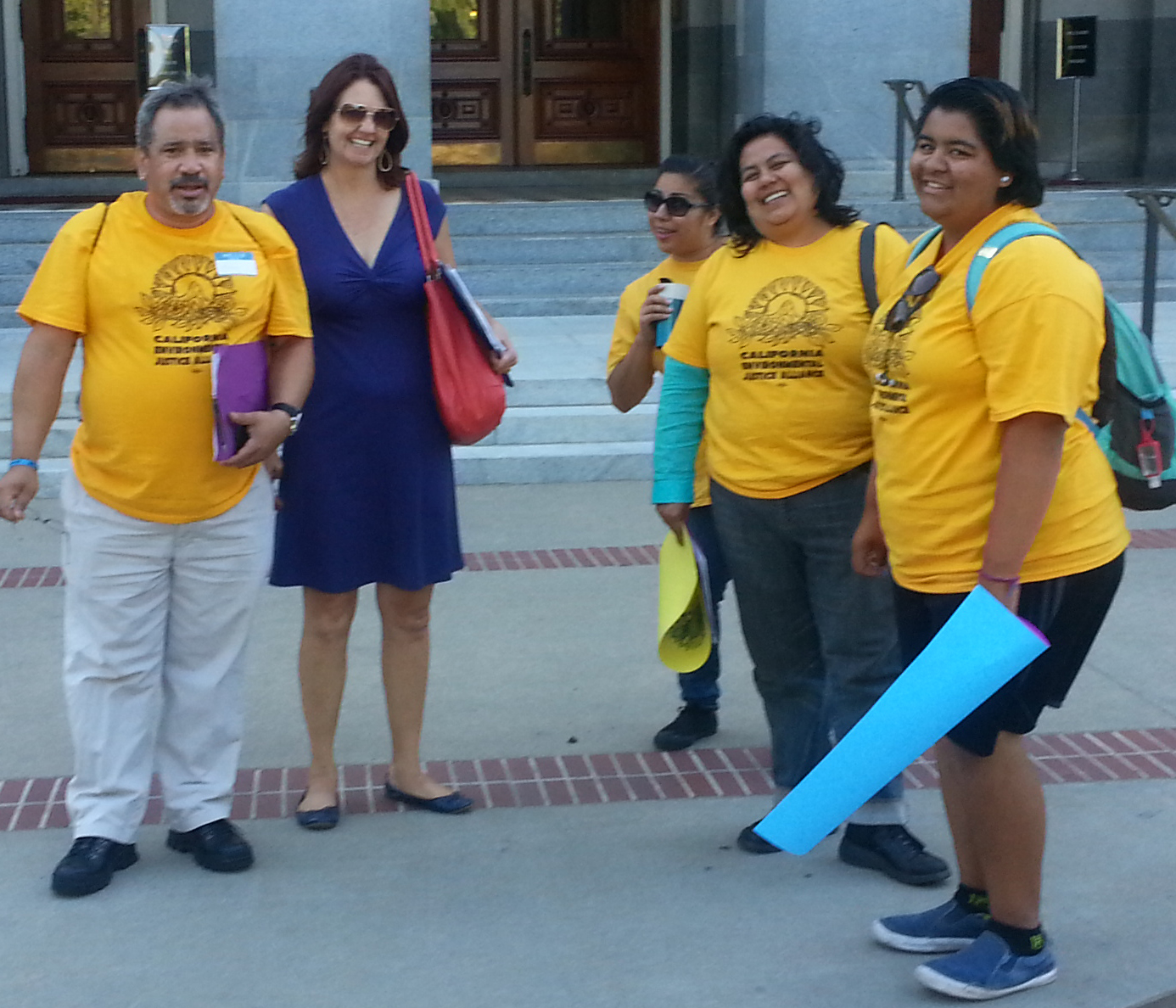
Roddy (left) advocating for his community
Originally from Hawaii but now a resident of City Heights for many years, Roddy Jerome has a vested interest in what goes on in his community. A little more than a year ago, he started to attend EHC community meetings in City Heights and began to find out more about how his neighborhood and the entire region is impacted by dirty energy, lack of good transportation and a variety of other environmental justice issues. In 2013, Roddy attended and testified at state energy hearings, at San Diego City Council Committees about the City's climate plan, at SANDAG hearings about the Mid-City bike corridor and in Sacramento to lobby state Legislators. But the aspect of community advocacy Roddy enjoys most is knocking on doors and informing his friends and neighbors about the common issues that effect all of us, urging them to get involved. Roddy continues his involvement with City Heights and EHC and is a perfect example of social change for justice.
Meet Vanesa Hernández
Vanessa (center) with Andrea (left) and Isaac (right) in the woods near Arroyo Alamar
Vanesa Hernández has been an inspiring member of the Youth Group Jóvenes Pro Justicia Ambiental for more than five years. Vanesa is a seventeen year-old critical thinker who likes to write. She participates in conferences and gives media interviews on the hazards of industrial polluters in her community. "There are companies that generate nothing but garbage, that sell things that stop working quickly so we will buy them again, creating more and more trash and making the companies richer and richer," says Vanessa. "The answer is lack of information, and our best alternative is organizing." Her mother, Karina Zavala, and brother, Bryan, join Vanesa as members of the border campaign. Click here to read her essay, and get to know Vanesa and other members of the Youth Group here.
Meet Edith Maldonado
Edith and her son
Edith Maldonado has lived in Old Town National City for eight years, and has been involved with EHC for the last four. "My interest in getting involved in the organization was to be able to better my community, because there are a lot of polluting shops around where I live," explains Edith. "I have two children who live with me - one is 6 and the other 8 years old - and I want them to have a better life, to live in a healthier community. I also like participating as a volunteer so I can educate other parents about the dangers of living in an area where polluting industries and homes are all mixed together." She would like to live in a community that is free of toxic pollution and for no child to get asthma due to the pollution in their neighborhood.
Meet Maria Esther Aguayo
Maria (center) at a community meeting
Maria Esther Aguayo is an active community member in Barrio Logan, passionate about healthy and toxic-free neighborhoods. She allowed EHC to set up video cameras on her front porch and record all the industrial activity at a fruit warehouse across the street from her home. Cameras filmed 24 hours a day, seven days a week for two weeks, recording the real-life impact of mixed land-uses on residents in Barrio Logan. Soon after the videos were exposed, the warehouse was relocated to an industrial area in National City - something EHC had been trying to do for years. "We have the power to make positive changes in our community by coming together," says Maria. "Although I know no change happens overnight, I am hopeful it comes little by little and excited we are finally on the right path." A Barrio Logan resident for 23 years, Maria currently resides in Logan Heights with her husband, two teenage daughters and young son. Originally from Guadalajara, Mexico, Maria loves Barrio Logan because it reminds her of her home in Mexico.
MEET Itzia López Luján
Itzia and her video camera 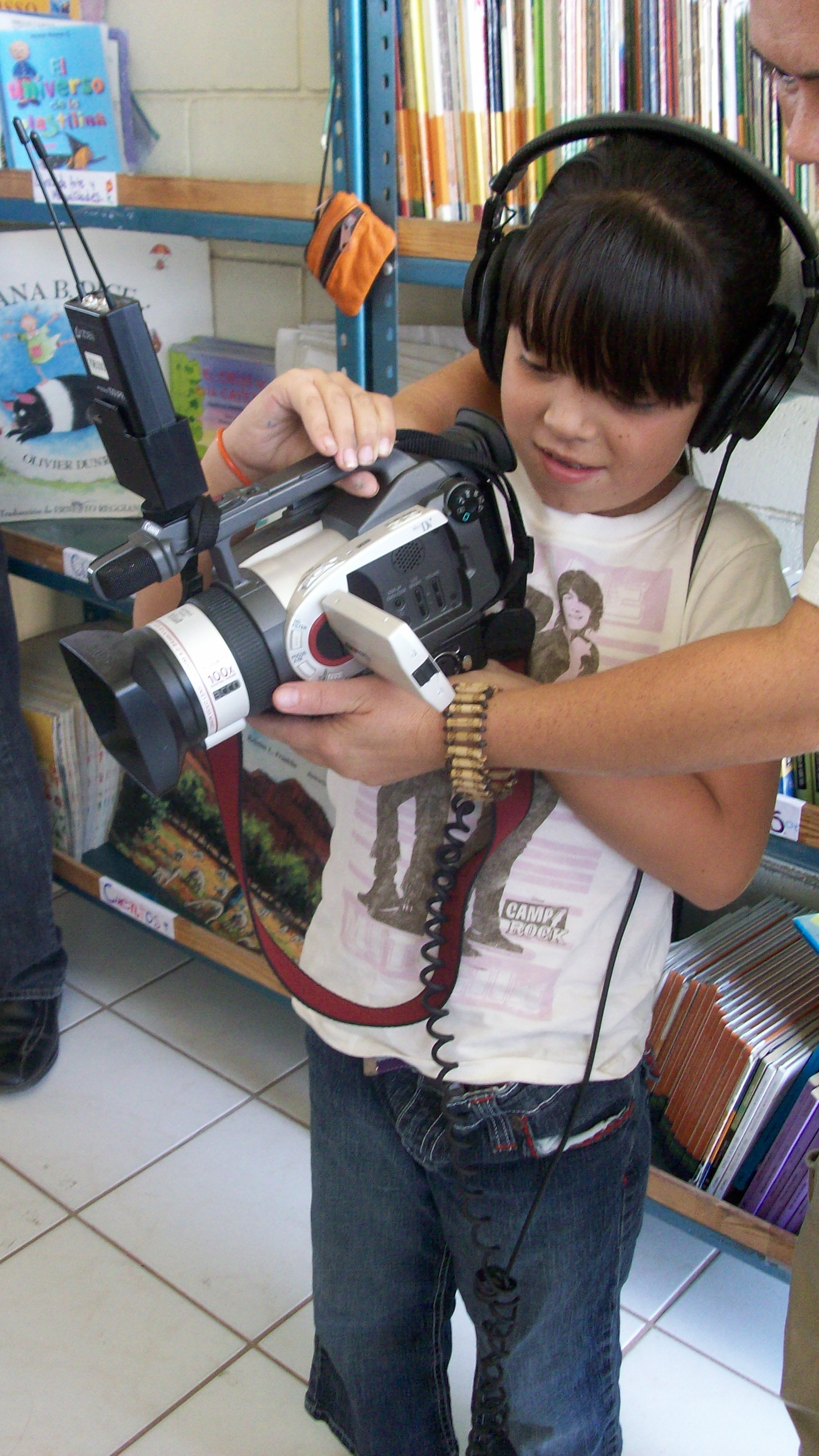
Itzia López Luján is 13 years old and has been a member of the EHC Youth Group since she was seven. She is the daughter of Guadalupe Luján, one of the first promotoras of the Colectivo Chilpancingo. Itzia has done radio and television interviews on issues regarding air and the Arroyo Alamar. She was born in the community in which she participates and has been involved in all the campaign's activities to promote environmental justice in her community. "I like making things like comic books and games to teach others about the issues we work on, like air pollution and the Arroyo Alamar," says Itzia. "I live very close to the maquila and I would like to see my community clean and have safe jobs."
Get to know Itzia and other members of the Youth Group.
MEET JOAQUINA HERNANDEZ FROM NATIONAL CITY
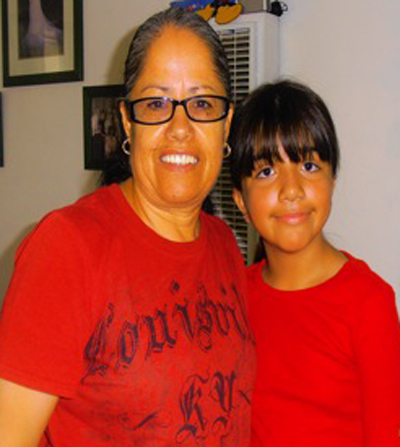 Joaquina and her daughter, Brisa
Joaquina and her daughter, Brisa
Joaquina recently joined the group of leaders in National City, even though she has lived in this neighborhood for four years. Two years ago became involved with EHC to improve her community. When Joaquina began participating, she attended community meetings to support an affordable housing project in Old Town National City. Joaquina says, "We need more affordable housing because rent here is very expensive and most of the residents are low-income." She works to make her community a place where her 10 year-old daughter, Brisa, can have more recreational space and green areas. Joaquina wants to make their community safer and eliminate pollution to protect the health of children and elderly people.
MEET NALLELY ACEVES AND JESSICA VILLANUEVA

Nallely Aceves
EHC celebrates the academic achievement of two children of the National City Community Action Team (CAT) members. Both families are getting ready to send their daughters off to college. Fabiola Aceves' daughter, Nallely, will be attending the University of California, Berkeley and has been awarded the very prestigious Gates Millennium Scholars (GMS) program. Maria Villanueva's daughter, Jessica will be going to California State University San Marcos. We are proud of our CAT members and all their hard work to provide a healthy and vibrant future for their families. We wish the best to Jessica and Nallely in their academic endeavors.
MEET EHC'S ROSARIO "CHAYO" GARCIA

Chayo (second from right) with Jay Powell, Martha Cortés, and former Council President Tony Young
Rosario "Chayo" Garcia has been a proud member of EHC since 1995. She first became involved with EHC by taking SALTA leadership classes, looking to get hands-on involvement with the issues affecting her community. "One of the first things that I learned in SALTA was that I could make changes in my neighborhood," she said. "This motivated me to continue to participate and learn as much as possible." Chayo describes herself as a shy person who was encouraged through SALTA to be outgoing, talk to her neighbors, and share her knowledge with others. She sees education as a prerequisite for change. "It is important to spread information so others can take action and protect their families," she says.
MEET MARTHA CORTÉS FROM SHERMAN HEIGHTS

Martha (in EHC teal) at a recent blood-lead testing event
Martha started community-organizing work with EHC when she was three-months pregnant. At the time, she lived in a very old home and didn't know about the health risks of lead in older homes. Martha got involved with EHC to help her children and others. She continues to support her community and its children by educating her neighbors and friends about the health risks of lead poisoning, including advocating for policies that ensure rental properties are lead free. Martha recently was awarded EHC's Healthy Kids Champion Award in April for her work. She encourages everyone to get involved to protect children's health and told us, "With the information that we share, we can all protect our children!"
MEET PATRICIA SAENZ FROM CITY HEIGHTS

Patty's an EHC Community Action Team founder, SALTA graduate, board member, and most importantly - mom. After her home tested positive for lead a few years ago, she decided to start a movement in City Heights to ensure other homes were tested and kids were safe from lead poisoning. We can count on Patty to talk to elected officials or her neighbor down the street about quality of life and health issues in City Heights. She works hard to make her community better. Read more about Patty and her work in a recent interview with the UT San Diego. We really appreciate your leadership in City Heights, Patty!
MEET MARIA MARTINEZ FROM BARRIO LOGAN

Maria (left) and EHC's Maria Moya speaking with Voice of San Diego
Maria lives adjacent to industries that in the past were terrible to the environment and residents' health. A Barrio Logan resident for 18 years, she's fought for cleaner air and water in her community since finding out that one of her three boys has asthma. María is a frequent spokesperson for the community and was nominated by the Community Action Team to represent them on the EHC Board in 2009. Thank you for your leadership in Barrio Logan, Maria.
MEET CATHEY WILLIAMS, A MEMBER OF OUR CITY HEIGHTS COMMUNITY ACTION TEAM

Cathey says that participating at city council and port commission hearings on behalf of EHC has taught her more about issues facing her community. She also recently attended advocacy training with our statewide partner organization, the California Environmental Justice Alliance. Thank you for your leadership in City Heights, Cathey.
SAN DIEGO'S COMMUNITIES OF COLOR, ESPECIALLY THOSE SOUTH OF THE I-8, ARE THE MARGIN OF VICTORY IN THE ELECTIONS.
EHC LEADER PATRICIA SAENZ TALKS ABOUT HER EXPERIENCE IN EHC'S SALTA LEADERSHIP TRAINING
MESSAGES TO INSPIRE YOU FROM GRADUATES OF EHC'S SALTA PROGRAM
FOR MORE THAN 30 YEARS, ENVIRONMENTAL HEALTH COALITION HAS CONFRONTED ENVIRONMENTAL INJUSTICES IN THE SAN DIEGO/TIJUANA REGION.



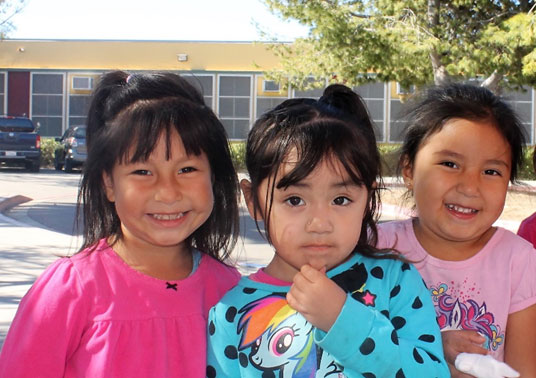
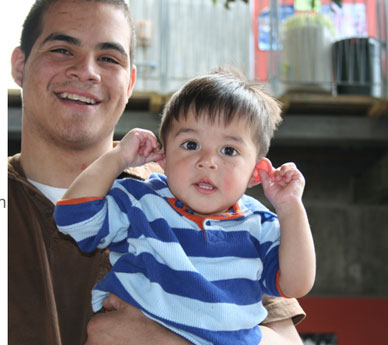
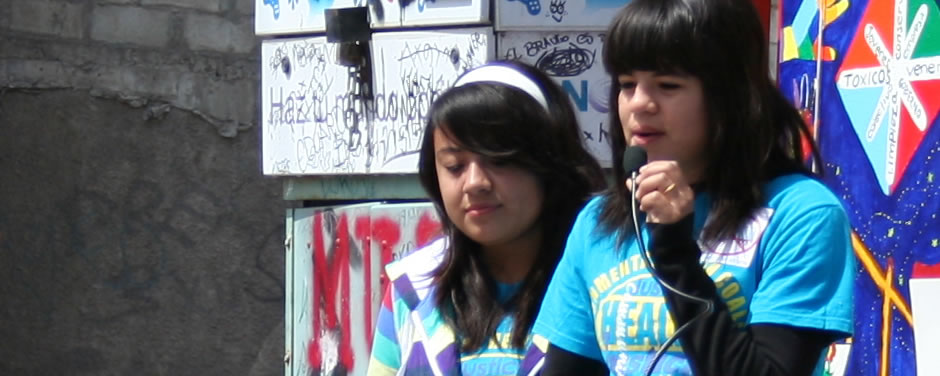 Climate change has come to San Diego.
Climate change has come to San Diego.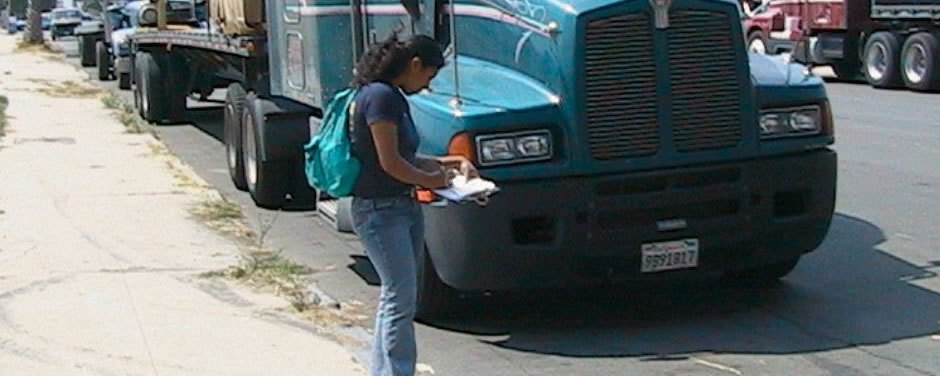


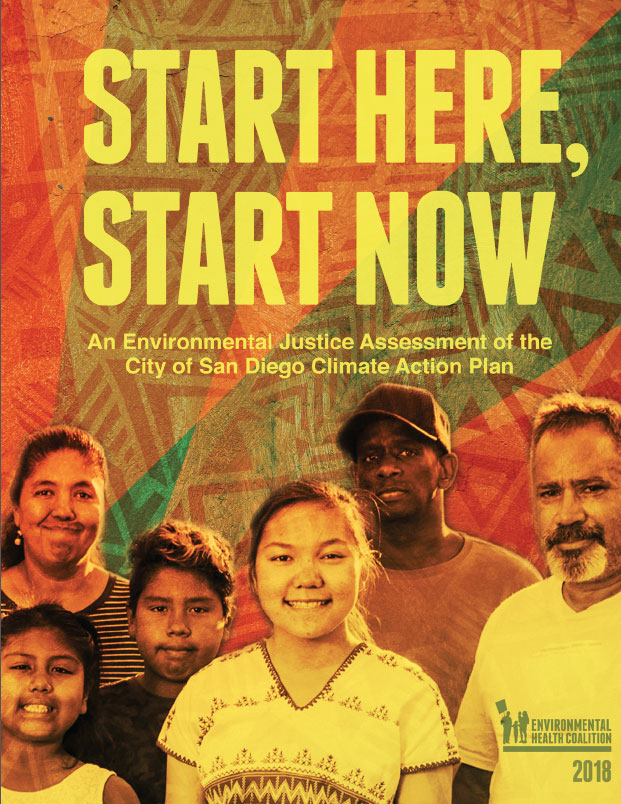 Divided into six sections,
Divided into six sections, 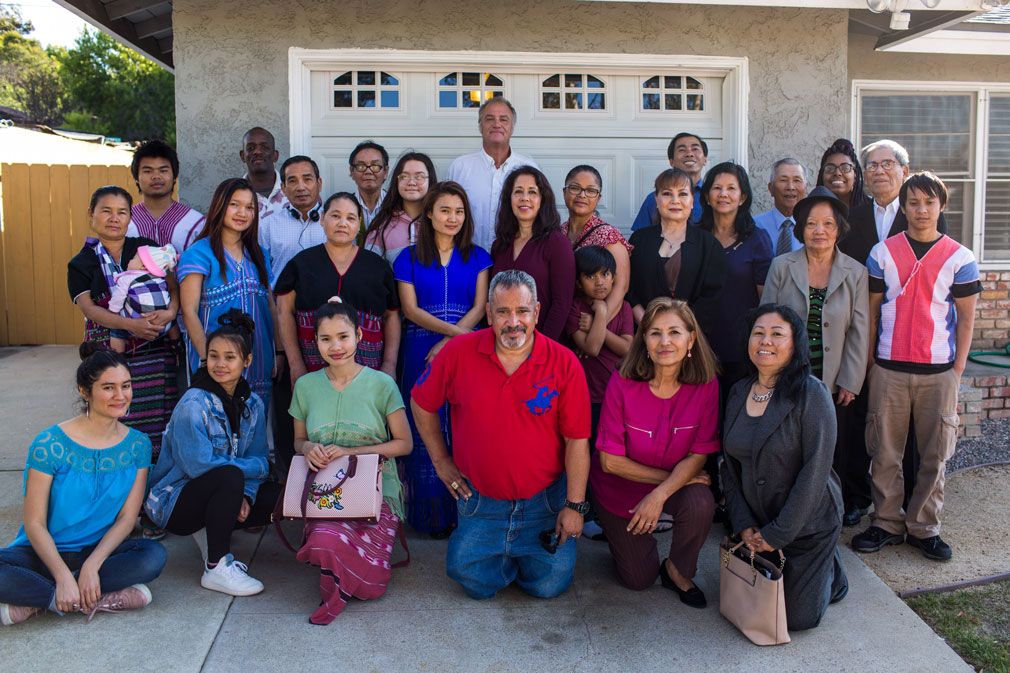
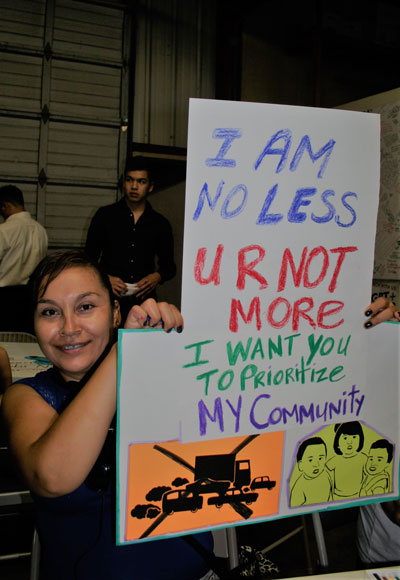
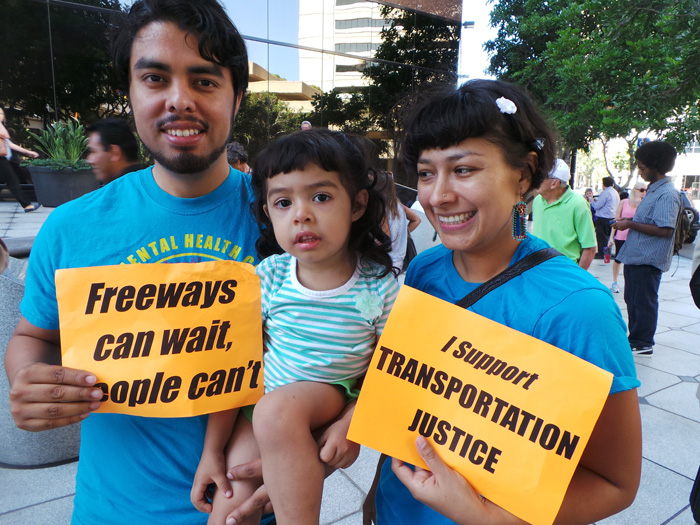 We all need to move. How we get from place to place is deeply connected to our quality of life. Unfortunately, not all communities have the same access to healthy, safe, reliable and affordable transportation options, such as public transit and biking and walking paths. That means some people don't have access to the same quality of life, just because of where they live.
We all need to move. How we get from place to place is deeply connected to our quality of life. Unfortunately, not all communities have the same access to healthy, safe, reliable and affordable transportation options, such as public transit and biking and walking paths. That means some people don't have access to the same quality of life, just because of where they live. 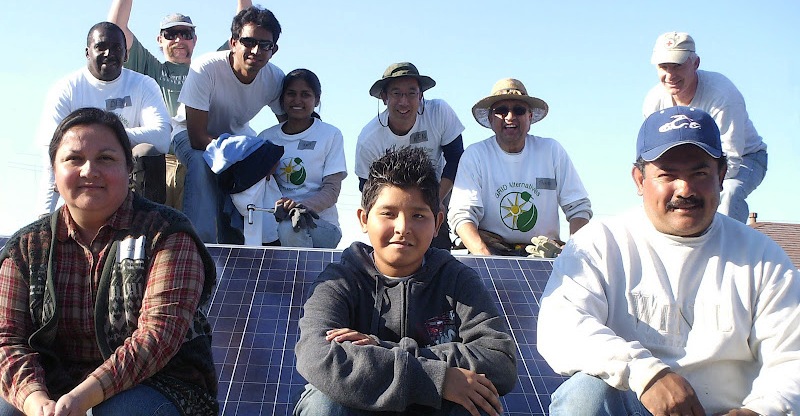
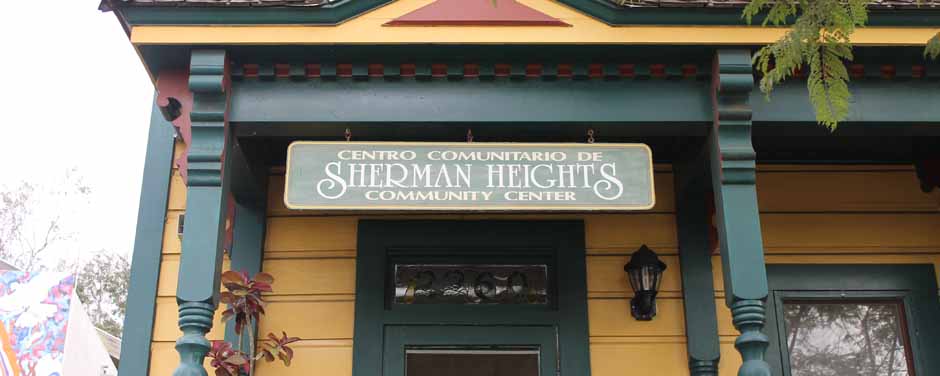
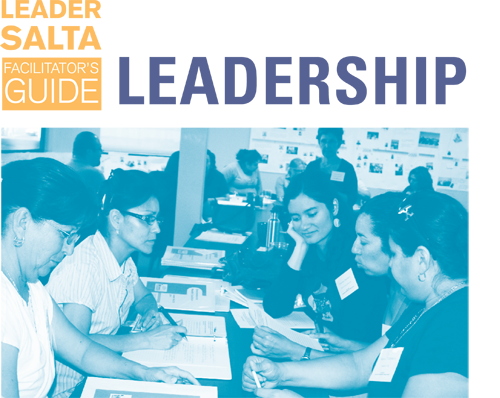
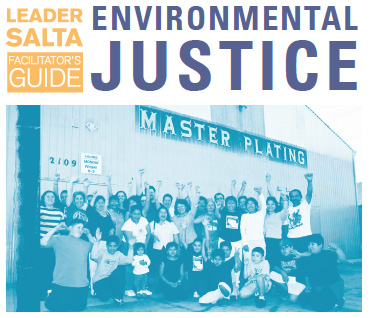
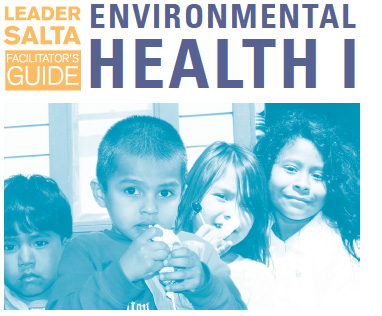
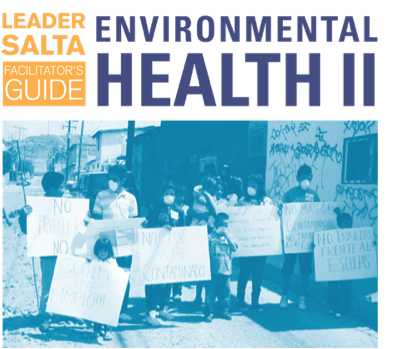
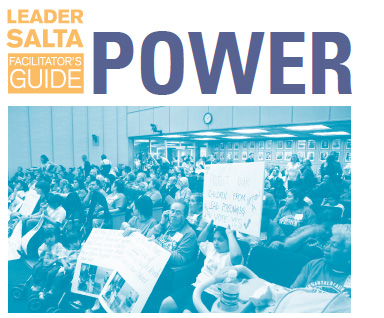
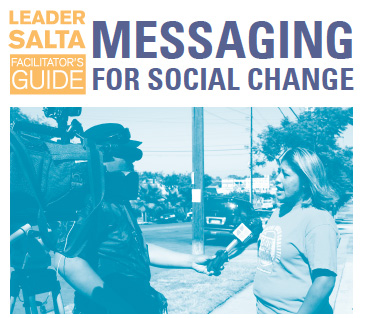
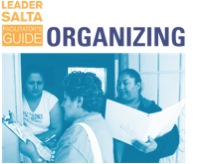
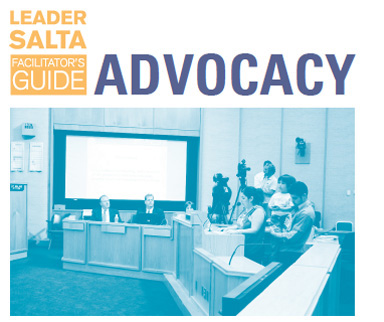
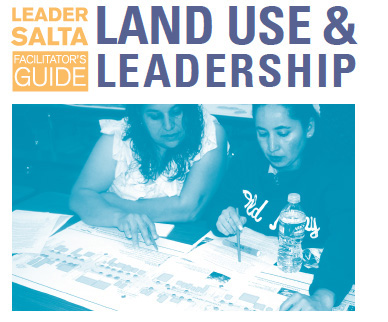
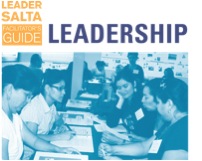













 Since joining EHC last year, Paw Say has already become a local leader. With the help of EHC’s
Since joining EHC last year, Paw Say has already become a local leader. With the help of EHC’s 











.jpg)







 Joaquina and her daughter, Brisa
Joaquina and her daughter, Brisa





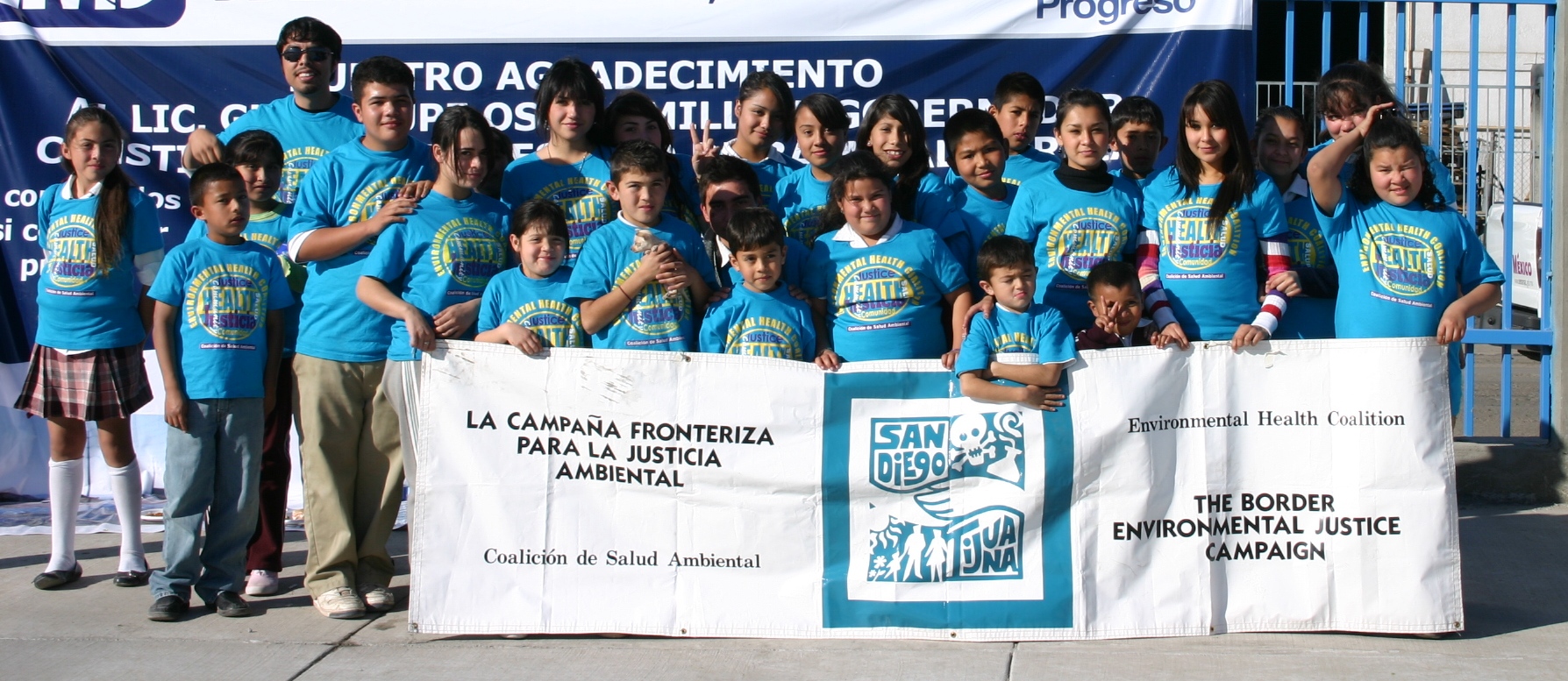
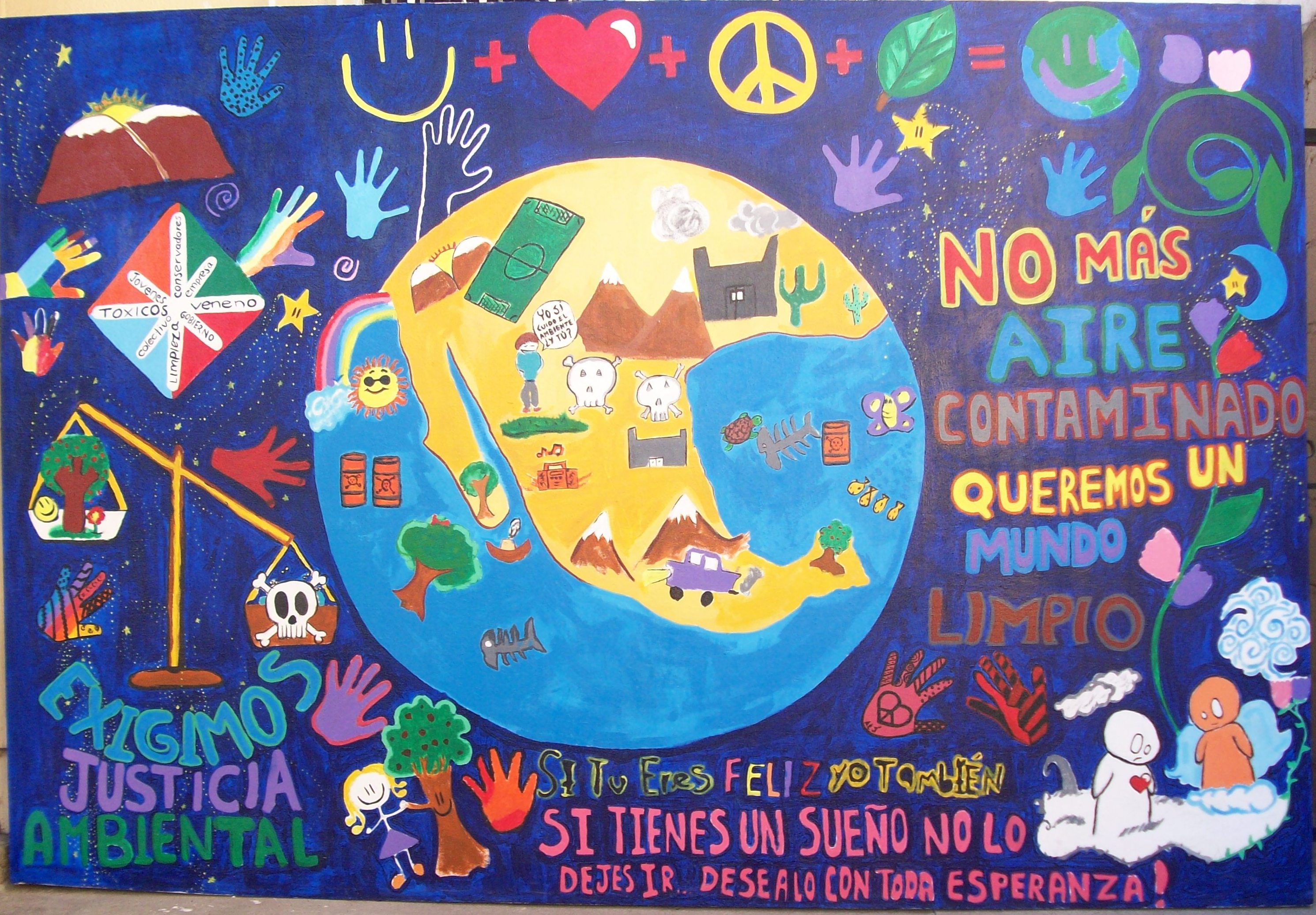
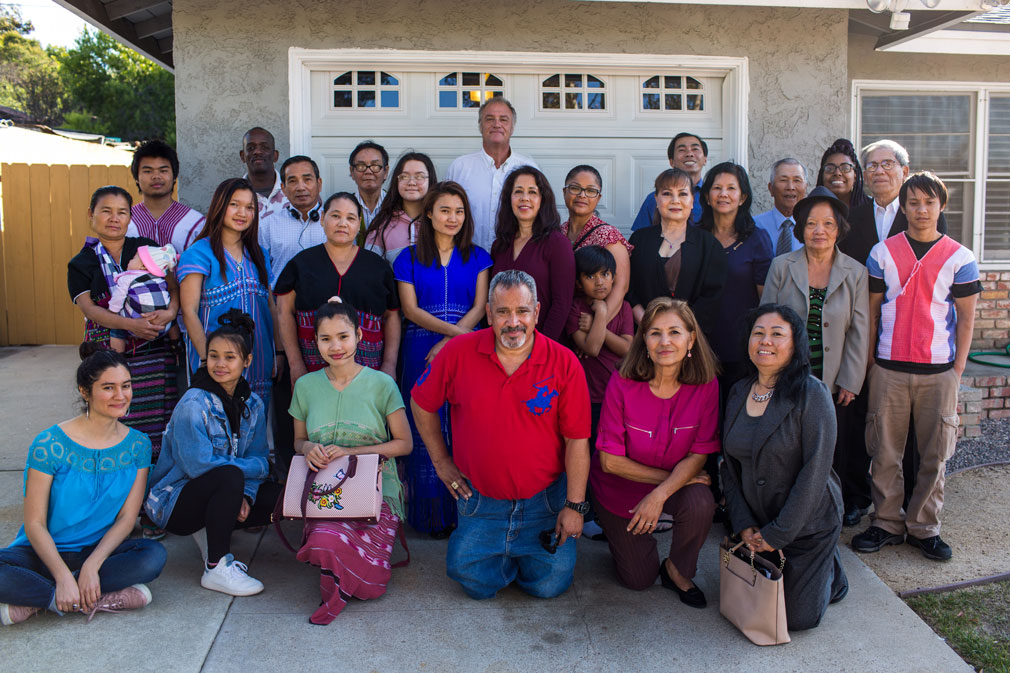
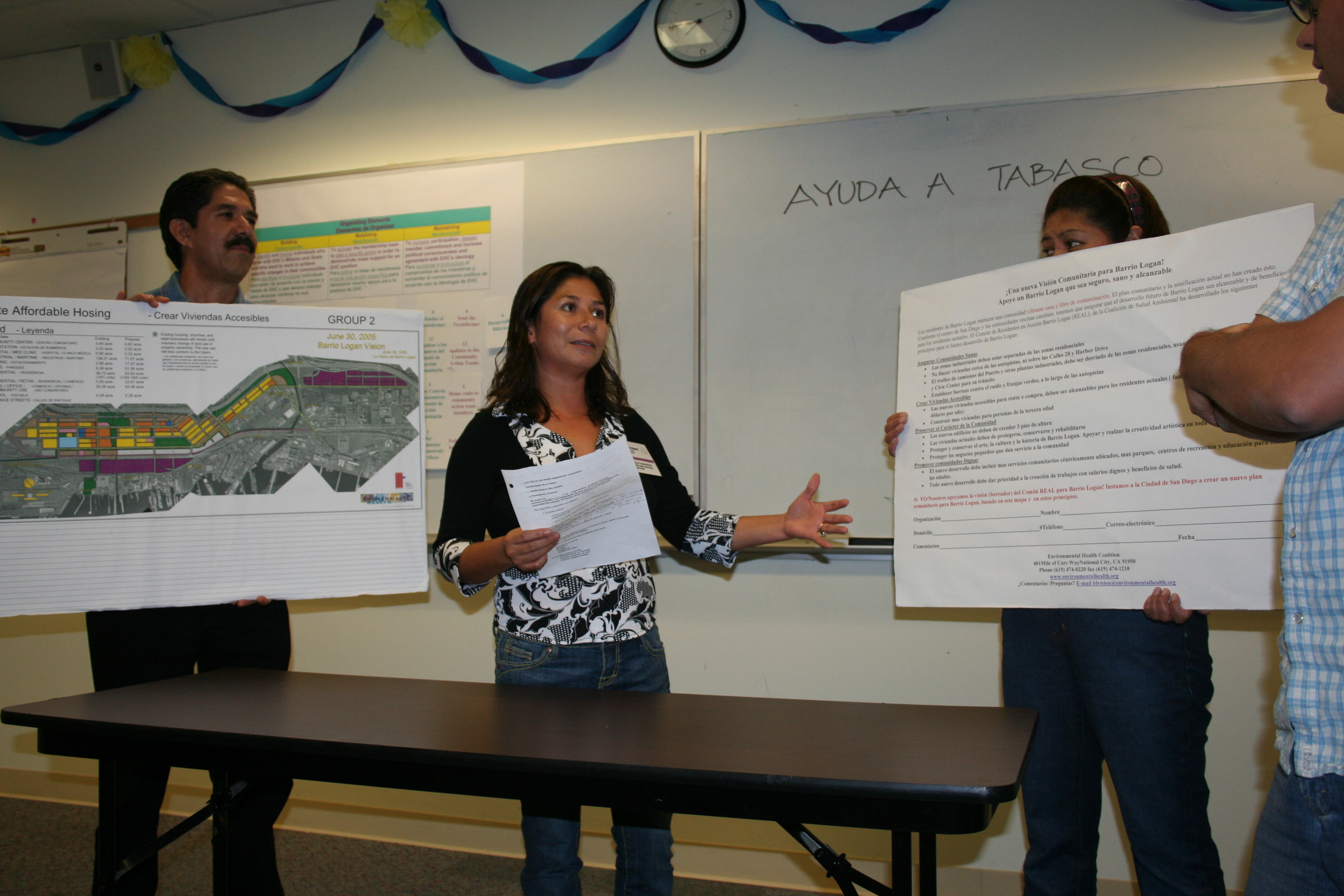 Authentic community involvement in every aspect of community planning and visioning leads to better outcomes that respect neighborhoods and their residents. EHC’s core strategies for all our efforts include community organizing and policy advocacy, which we combine with grassroots leadership development, research and communications to implement each strategic plan. To ensure that the community’s voice is heard, EHC employs the following tactics:
Authentic community involvement in every aspect of community planning and visioning leads to better outcomes that respect neighborhoods and their residents. EHC’s core strategies for all our efforts include community organizing and policy advocacy, which we combine with grassroots leadership development, research and communications to implement each strategic plan. To ensure that the community’s voice is heard, EHC employs the following tactics: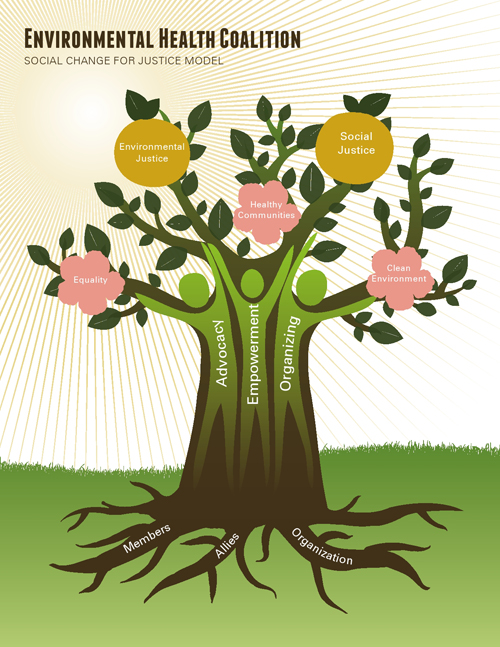
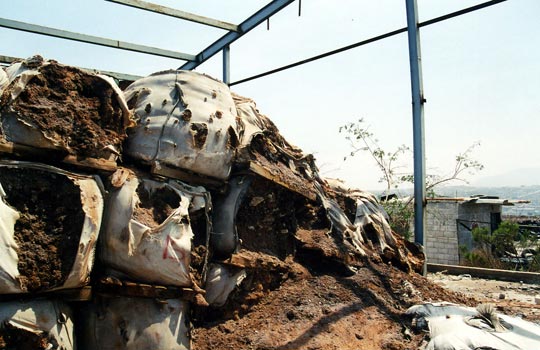 With corporate globalization, trade increased along the U.S.-Mexico border and so did pollution. However, trade agreements like NAFTA fail to hold polluting corporations responsible or to provide resources for environmental protection.
With corporate globalization, trade increased along the U.S.-Mexico border and so did pollution. However, trade agreements like NAFTA fail to hold polluting corporations responsible or to provide resources for environmental protection.